Fauxbesity

......................................................................................................................................................................
Even dictionary.com is becoming outdated. With our new fast paced, technologically inclined society, it seems like we don't even have time to blink before it's time to update again. In order to "keep up with the times" many companies are introducing their own novelities. For fear of sounding cliche, some companies have opted to simply create new words in order to differentiate themselves. Millions of products and services clutter our marketplace, so how do we stand out? Ingenuity. Marketers and Advertisers today want to tell you something different, something that you don't already know. So they are going to coin a new phrase or define a new word to do it. That is sure to grab consumer attention...right?
Fauxbesity, a new word splashed across the pages of magazine advertisements, utterly baffles dictionary.com and my trusty old Merriam-Webster pocket dictionary. Perusing through Martha Stewart Living Magazine, this fancy little word jumped off the page, begging me to read on. Well done Subway, you caught my eye!
Subway defines Fauxbesity as a noun meaning the "half-hearted claims other fast food chains make about helping kids eat better." It seems that so many companies have tried to say the same thing in an innumerable amount of different ways. Enough is enough, there are only so many different variations available to be fought over. So Subway decided to leave the clutter behind and reinvent the health food arena with this catchy little new word.
In my personal opinion, I think this innovative word creation is a great idea for market differentiation. Let's face it, we are always growing and expanding, looking for bigger and better ways to stand out. Why not spice things up a bit? If it works, and people connect with your new "creation," I say go for it! Carry on fauxbesity!
Contributed by Carrie Friedrich
Palm says no to "O"
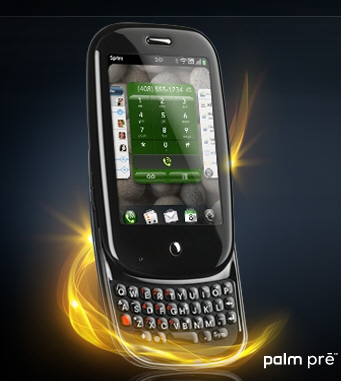
Just when you thought you had the latest and greatest Smart Phone on the market, along came the new >Palm pre. Available exclusively to Sprint customers (for now), the pre is Palm’s answer to the iphone. The phone rocks a 3.1 inch touch screen, WiFi and 3G connectivity, web browsing, Microsoft Outlook access, GPS, camera, and a QWERTY keyboard that slides beneath the screen—optimal for serious texters looking to avoid the error filled messages spit out by the combination of big fingers and small touch screens. Former iphone owners say the best thing about the pre is the ability to run multiple applications at one time.
But most unique to the pre, perhaps, is the name itself. Palm’s current handset lineup includes the centro, treo and treo pro. The “-o” on the end of each name seems to be an intentional nomenclature strategy. So did Palm ditch the “-o” for good? Probably not. My guess is they went with a standout name for a standout model. The meaning of the word “pre” offers a lot of creative potential in terms of concepts that are relatively transparent. Whereas preo sounds more like a car, and maybe does not differentiate the new phone quite as effectively from its predecessors. So no hard feelings, "O", I'm sure it's only temporary.
Contributed by Laine Beyerl
A New Spin on Laundry
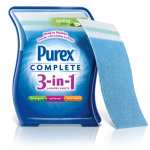
A recently launched product may change your life: or at least, your laundry. Purex recently introduced Purex Complete 3-in-1 to the laundry detergent market. Based on the concept of “laundry simplified,” Complete 3-in-1 is the ultimate all in one laundry solution. The product offers a unique approach by combining detergent, fabric softener, and antistatic into one single sheet. The laundry sheet is used first in the washing machine as a detergent. It then travels to the dryer, acting as a fabric softener and antistatic agent activated by heat. Purex claims that their new sheet is not only cost effective, eliminating the need for multiple laundry products, but environmentally friendly as well. The product uses less water that is added to liquid detergents and less packaging to keep our landfills free from empty bottles.
The Complete 3-in-1 name, though a bit lengthy, is descriptive in nature most likely to convey the product benefits transparently to a consumer that may not have heard of the product before cruising down Aisle 7. The only down side of the name may come with future product extensions like “unscented” or “hypoallergenic”. The packaging could potentially become a bit crowded with descriptors.
Currently, Procter & Gamble detergent brands (Tide and Cheer) lead the market with a commanding 57.1% of the liquid detergent market and 75% of the powder detergent market (statistics according to IRI). But with such an innovative product, Purex stands to gain a bit of that share by taking a stand as a first mover. There are likely to be several ‘me too’ products popping up from other brands soon.
Contributed by Laine Beyerl
Milk Chocolate Monkeys

......................................................................................................................................................................
Flipping through the pages of Martha Stewart’s Living, a print advertisement caught my eye. Endangered Species. What comes to mind? Forest Frogs, Western Gray Whales, Grevy’s Zebras, Tazmanian Devils, and Purple Marsh Crabs. But this creative little title has proven me wrong … a chocolate brand. I don’t know about you, but I generally like to know what I’m getting myself into when it comes to my chocolate, and this threw me for quite the loop. Endangered Species Chocolate brand has admirably introduced a great intention of cause-related marketed; incorporating people’s love for chocolate while simultaneously saving endangered wildlife. Sadly, by naming the product after the cause it may lose some of its potential customers by misleading them. Speaking as a true chocolate connoisseur, I can tell you that as I pan down the aisle of my local grocery store to find the perfect fix for my sweet tooth, the arbitrarily named Endangered Species Chocolate would most likely be disregarded. On the other hand, the chocolate brand could gain popularity simply by being out of the ordinary, catching the wandering eyes of consumers and drawing curious attention. Unfortunately, many shoppers do not have the time to peruse the aisles and investigate arbitrarily named products to discover their true contents: chocolate.
Endangered Species Chocolate promises that “10% of net profits [are] donated to help support species, habitat and humanity.” This effort of “Gourmet chocolate that gives back” is the perfect way to justify the chocoholic tendencies of consumers by donating portions of the sales to saving endangered wildlife. I think the product would fare much better on the shelves if the arbitrarily named product was restructured to portray its actual contents of chocolate.
The clever tagline reads “Savor chocolate. Save our planet.” Ok, you don’t have to ask me twice.
Have any name change suggestions for Endangered Species Chocolate that would entice you to indulge in a sweet treat for the love of Forest Frogs?
Contributed by Carrie Friedrich
A Brand New World
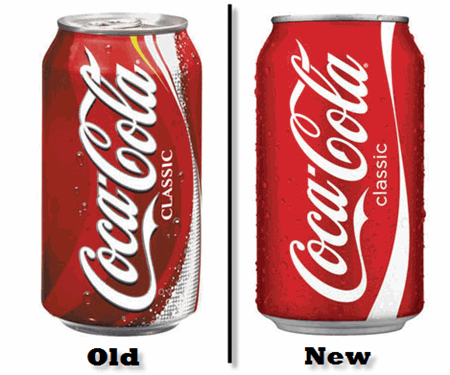
......................................................................................................................................................................
Out with the old, in with the new.
In order to keep up with our fast-paced marketplace, companies, products, and services are constantly exploring fresh ideas and new identities. Many of these rebranding efforts result from a number of needs including, but not limited to: ridding a company of negative connotations, entering a product into a new market segment, merging companies, or simple updating. Many notable entities have succeeded in rebranding efforts focused on the company itself (utilizing new logos, mottos, taglines, names, etc.), and have retained unwavering brand loyalty. And now, to turn the spotlight on one such company …
Coca-Cola. This exemplary brand has undergone a makeover to add a fresh new twist to their bottles and cans. Coke cans and Sprite cans are now donning new looks with clean and fresh features. Not to say the old cans were in desperate need of a change, but it is nice to keep consumers on their toes in order to truly appreciate the value of the brands they patronize.
On the Coke Classic can, the excess clutter of bubbles, stripe of yellow, and plentiful swirls have been eliminated to allow full attention to be focused on the red and white logo of Coca-Cola. In my opinion, this rebranding effort was a brilliant move for such an iconic company. Coca-Cola has established itself as a powerful brand and has earned its claim in the soft drink industry. This rebranding effort acknowledges the bold, confident, and trusted name of Coca-Cola that so many people worldwide know and love.
Sprite, a Coca-Cola product, has also received a can makeover. The new cans appear to be somewhat edgy and revolutionized. The colors are vibrant, edges are jagged, and logo is somewhat futuristic. The same basic color schemes and font have been incorporated into this updated new look. This rebranding effort reveals careful positioning and planning on behalf of Coca-Cola. With all the new soft drink variations entering the industry, something had to be done in order to keep Sprite on the leader board. The new look connects with the target market using a fresh, inventive, and confident approach.
These two examples of rebranding show the important impacts of staying one step ahead of the industry. With more creativity than ever before, companies are constantly competing for top-of-mind awareness amongst consumers. Researching, experimenting, updating, reinventing, and connecting; these terms are becoming the common vernacular of today’s companies.
As the saying goes, the only constant in the universe is change.
Don’t get left behind.
Contributed by Carrie Friedrich
Creative Naming Fights for Freedom from Censors
In our daily quest to create names that are strategically on-target AND available for trademark, our verbal branding team employs the full range of symbolism, metaphors and illusions. With that, we are always on the look-out for new and creative word and letter usages.
One fairly new naming trend uses letter strings to make a name that phonetically sounds like a word...think Motorola RAZR and KRZR. While we explore this type of naming strategy to help our clients pass the trademark process, some artists are using a similar strategy to foil censorship policies.
A Chinese "children's" song on YouTube tells the simple story of the "Grass Mud Horse" (picture a lama) that lives in "Ma Le Desert" and battles the "river crab" to protect its grass. If you think thatRead more
Making a Mark with Brand Punctuation
Brand namers are constantly searching for new and innovative ways to utilize the 26 letters of the English alphabet. Perhaps the answer is beyond those letters. A punctuation mark in your brand name not only helps it stand out from the crowd, but, if it is truly distinctive, can even be registered and protected as part of your trademark.
Look at how these brands have used a little punctuation in a big way:
E*Trade
Consumer identification with the asterisk between E and Trade is so strong that the punctuation itself is part of E*Trades registered trademark. The asterisk has also been extended across E*Trade's marketing materials, serving as a calling card for the brand.
Yahoo!
If a name ever needed an exclamation point, Yahoo was it. Without added punctuation the word Yahoo was at risk for coming across as an insult or as sarcasm. The exclamation point forces audiences to read the name as it was intended, as a celebratory shout. The simple mark has become as much a part of the name as the letters themselves.
Häagen-Dazs
If you think that this name is simply using traditional diacritics to stay true to its foreign heritage, think again. The umlaut in Häagen-Dazs is as meaningless as the name itself. The brand simply uses two made up words with cleverly placed punctuation in order to appeal to upscale audiences seeking a super-premium ice cream import.
Contributed by Maghan Cook
Can a tea brand ‘end bitterness?’

......................................................................................................................................................................
I grew up drinking Luzianne tea on my front porch. We served it at every family picnic and it was a staple within our refrigerator. The Luzianne brand epitomized “sweet tea,” and was considered the standard southern beverage.
The company’s recent new product line is “Luzianne Coffee,” with a clever campaign to “end bitterness.” While I love the call to action of the new initiative, will this simple brand extension dilute the equity they have in their famous tea brand? With Luzianne’s heritage as a cool, refreshing, afternoon front porch beverage, will it be difficult for the company to successfully cross over into the hot, wake-you-up in the morning coffee space?
12 Toys of Christmas: 11 Logs of Lincoln
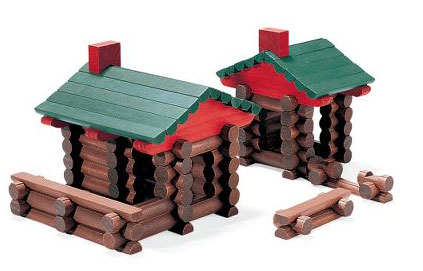
......................................................................................................................................................................
“All Wood Pieces Just Like You Remember!”
According to the Lincoln Logs website, the product was created in 1916 by Mr. John Lloyd Wright, the son of Frank Lloyd Wright. The cylindrical wooden building toys were marketed by the Red Square Toy Company originally, though the products are now owned by K’Nex industries.
So why Lincoln Logs? Besides the obvious fun of saying it, the name Lincoln is clearly associated with the American president, Abraham Lincoln. Lincoln was famously born in a one-room log cabin in Hodgenville, Kentucky. There is also a Thomas Lincoln Log Cabin historic site in Illinois dedicated to a log cabin built by the president’s father. Ironically, the only residence Lincoln himself ever owned was in Springfield, Illinois, and it was not a log cabin.
Still, the name Lincoln seems inextricably linked to the imagery and folklore of American log cabins. Thus, the name Lincoln Logs effectively relays that workmanship and nostalgia for fans of all ages.
And as if that wasn’t reason enough to use the name Lincoln for the product, there is more: Mr. Wright’s father was originally named Frank Lincoln Wright. He changed it to Lloyd after his parents’ divorce.
Contributed by: Maghan Cook
12 Toys of Christmas: 12 Weebles Wobbling
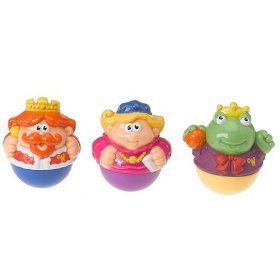
......................................................................................................................................................................
We all know the phrase, and admit it, you’ve said it more than once: “Weebles wobble but they don’t fall down.“
Originally introduced in the late 1960’s by Romper Room, Weebles were miniature versions of the familiar clown punching bags. The earliest Weebles were shorter and fatter (and a little scary looking) with peelable stickers that were easily scratched and ripped. When Hasbro acquired Romper Room in 1969, the new line was improved with non-peelable stickers and friendlier character faces and competed head to head with Fisher Price’s Little People. Since its introduction, the simple Weebles toy has expanded to include circus sets, treasure island themes, and even licensing agreements by Disney.
Popular Weeble toys have recently included:
History doesn’t show the origin of the name Weebles, but I can only assume it’s a fusion of “wee” connoting “little” and “wobble,” suggesting the rocking or side-to-side movement of the toys.
